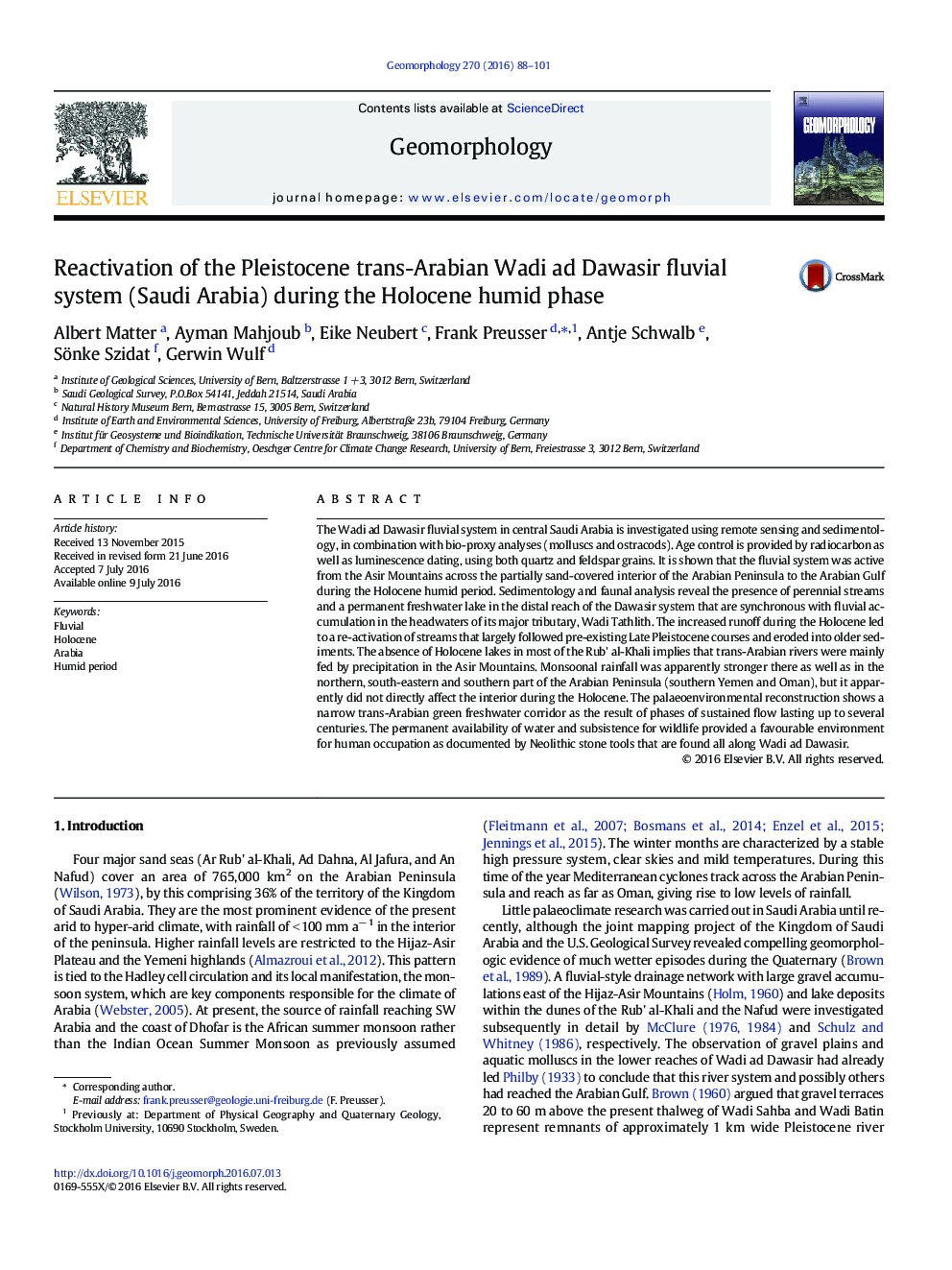| کد مقاله | کد نشریه | سال انتشار | مقاله انگلیسی | نسخه تمام متن |
|---|---|---|---|---|
| 4683896 | 1635379 | 2016 | 14 صفحه PDF | دانلود رایگان |
• Fluvial system active across Arabian Peninsula during Holocene humid period
• Perennial streams and permanent freshwater lakes in its distal reach
• Mainly fed by precipitation in the Asir Mountains
• Monsoonal rainfall did not directly affect interior of Arabian Peninsula.
• Green freshwater corridor result of phases of sustained flow lasting several centuries
The Wadi ad Dawasir fluvial system in central Saudi Arabia is investigated using remote sensing and sedimentology, in combination with bio-proxy analyses (molluscs and ostracods). Age control is provided by radiocarbon as well as luminescence dating, using both quartz and feldspar grains. It is shown that the fluvial system was active from the Asir Mountains across the partially sand-covered interior of the Arabian Peninsula to the Arabian Gulf during the Holocene humid period. Sedimentology and faunal analysis reveal the presence of perennial streams and a permanent freshwater lake in the distal reach of the Dawasir system that are synchronous with fluvial accumulation in the headwaters of its major tributary, Wadi Tathlith. The increased runoff during the Holocene led to a re-activation of streams that largely followed pre-existing Late Pleistocene courses and eroded into older sediments. The absence of Holocene lakes in most of the Rub' al-Khali implies that trans-Arabian rivers were mainly fed by precipitation in the Asir Mountains. Monsoonal rainfall was apparently stronger there as well as in the northern, south-eastern and southern part of the Arabian Peninsula (southern Yemen and Oman), but it apparently did not directly affect the interior during the Holocene. The palaeoenvironmental reconstruction shows a narrow trans-Arabian green freshwater corridor as the result of phases of sustained flow lasting up to several centuries. The permanent availability of water and subsistence for wildlife provided a favourable environment for human occupation as documented by Neolithic stone tools that are found all along Wadi ad Dawasir.
Journal: Geomorphology - Volume 270, 1 October 2016, Pages 88–101
